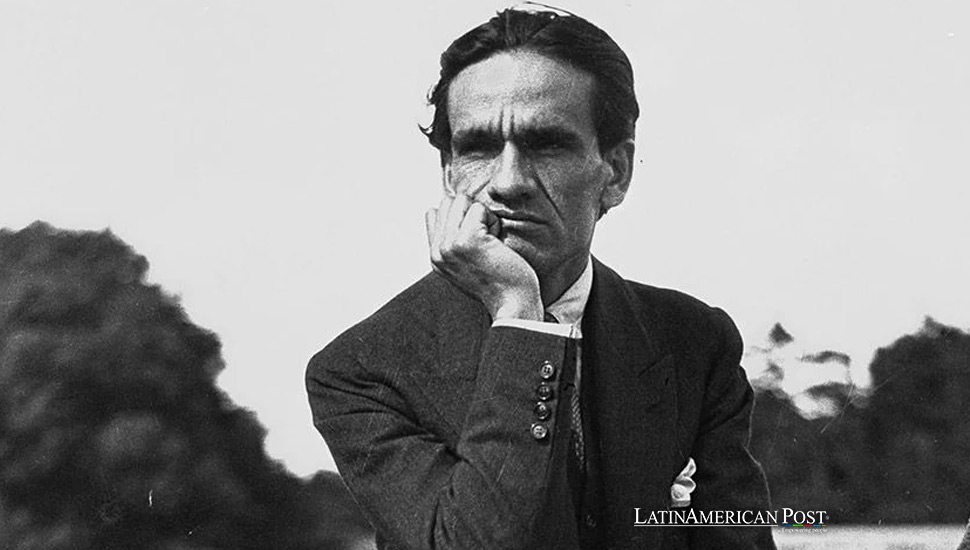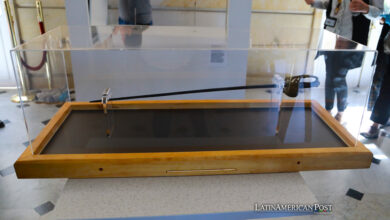Vallejo Reimagined in Peru’s Indigenous Tongues

In a groundbreaking cultural initiative, Peru’s Ministry of Culture unveils César Vallejo’s ‘Paco Yunque’ in eight indigenous languages, fostering a profound connection with the country’s rich linguistic heritage. This effort not only honors Vallejo’s legacy but also bolsters Latin America’s linguistic and cultural fabric.
In the serene Andean city of Santiago de Chuco, the cradle of César Vallejo’s genius, the air buzzed with anticipation as a significant cultural milestone was unveiled. ‘Paco Yunque,’ a poignant narrative crafted by Vallejo, has transcended its Spanish origins and is now reborn in the tongues of Peru’s indigenous ancestors. This linguistic revival, orchestrated by the Ministry of Culture (Mincul) of Peru, marks the 132nd anniversary of Vallejo’s birth, celebrating his life’s work with a resounding affirmation of Peru’s diverse cultural identity.
César Vallejo, a beacon of Peruvian literature, wove narratives steeped in social consciousness and existential inquiry. His works, including ‘Los heraldos negros’, ‘Trilce,’ and ‘Poemas Humanos,’ have left an indelible mark on Latin American literature. ‘Paco Yunque,’ one of his seminal short stories, delves into the themes of class disparity and innocence lost, mirroring the broader societal structures and injustices prevalent in early 20th-century Peru.
The Linguistic Tapestry of Peru
Peru’s linguistic landscape is a mosaic of indigenous languages, including Quechua, Aimara, Ashaninka, Awajún, Shipibo-Konibo, and Ticuna. The translation of ‘Paco Yunque’ into these languages is a testament to the government’s dedication to preserving and revitalizing these linguistic treasures. This initiative, facilitated by the Central de Interpretación y Traducción de Lenguas Indígenas (CIT) and Mincul’s Dirección del Libro y la Lectura, signifies a broader commitment to acknowledging and celebrating the country’s linguistic diversity.
The release of ‘Paco Yunque’ in indigenous languages was a vibrant affair in Santiago de Chuco, with the community gathering to honor Vallejo’s legacy and embrace their linguistic heritage. The distribution of free copies of the translated work to local children underscored the importance of accessible literature in fostering cultural identity and educational growth. The event was more than a literary celebration; it was a powerful statement on the value of language in shaping collective memory and identity.
Cultural Investment and Literary Promotion
The Ministry of Culture’s investment in promoting reading and literary production reflects Peru’s strategic vision for cultural enrichment and education. By dedicating significant resources to these endeavors, the government aims to cultivate a vibrant literary ecosystem that is inclusive and representative of the country’s diverse population.
The multilingual translation of ‘Paco Yunque’ resonates beyond Peru’s borders, reflecting a continent-wide awakening to the importance of linguistic and cultural preservation. Across Latin America, there is an increasing recognition of the role indigenous languages and cultures play in shaping national and regional identities. Initiatives like this serve as a blueprint for other countries in the region to follow, fostering a greater appreciation for cultural and linguistic diversity.
Integration of Indigenous Languages in Modern Contexts
The translation of ‘Paco Yunque’ into indigenous languages is not merely about preserving the past; it is about integrating these languages into contemporary cultural and societal contexts. This movement empowers indigenous communities, giving voice to their narratives and perspectives in the broader national dialogue. It also challenges the dominance of colonial languages, advocating for a more inclusive linguistic landscape that honors the myriad voices of Latin America.
Language is the bedrock of cultural identity, serving as a conduit for shared history, values, and experiences. By embracing Peru’s linguistic plurality, the translation of Vallejo’s work into indigenous languages strengthens the fabric of national unity, celebrating a collective heritage while acknowledging the distinct voices within the Peruvian tapestry.
Future Prospects and Challenges
While the multilingual publication of ‘Paco Yunque’ is a significant achievement, it also highlights the ongoing challenges in linguistic preservation and cultural promotion. Ensuring the sustainability of these languages requires continued efforts in education, media, and public life, necessitating comprehensive policies and community engagement.
Also read: A New Deer Species Discovered in Peru’s Forests
The multilingual edition of ‘Paco Yunque’ epitomizes a cultural renaissance, bridging the past with the present and the local with the global. This initiative pays homage to César Vallejo’s enduring legacy and illuminates the path for a more inclusive and diverse cultural future in Peru and Latin America. Through such endeavors, the rich tapestry of indigenous languages and narratives can continue to flourish, fostering a deeper, more nuanced understanding of the region’s cultural heritage and contemporary identity.





